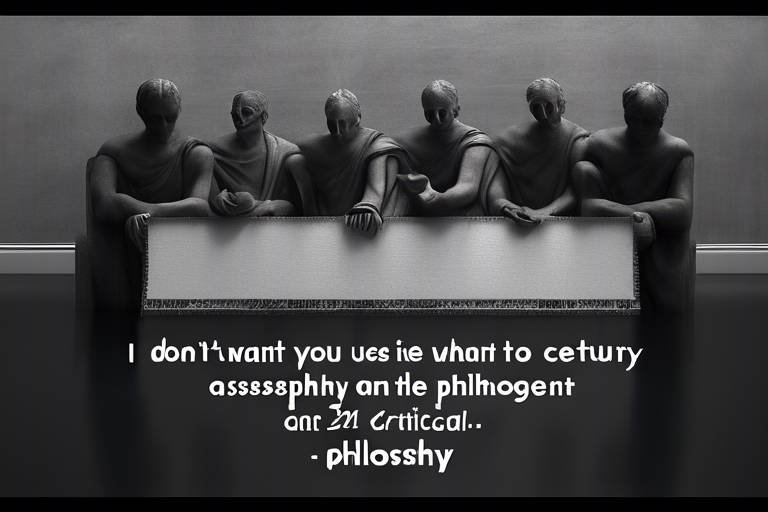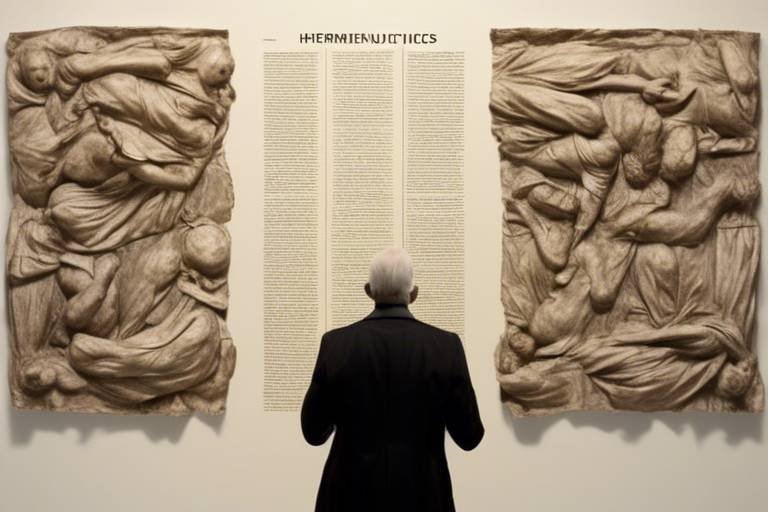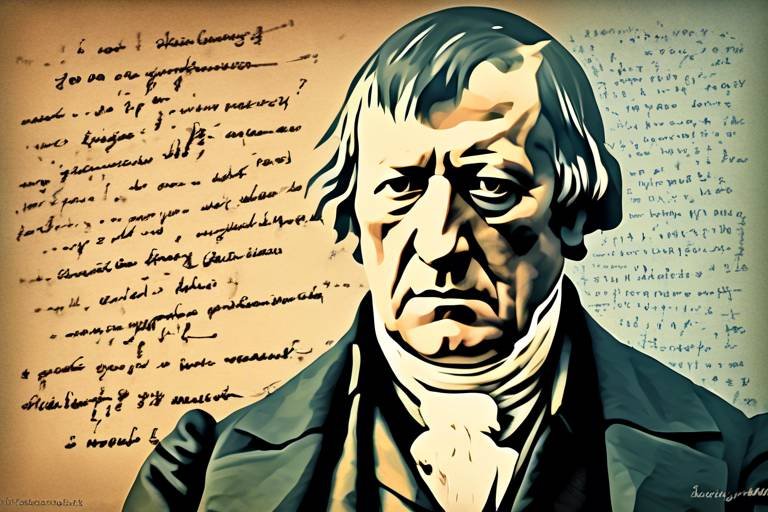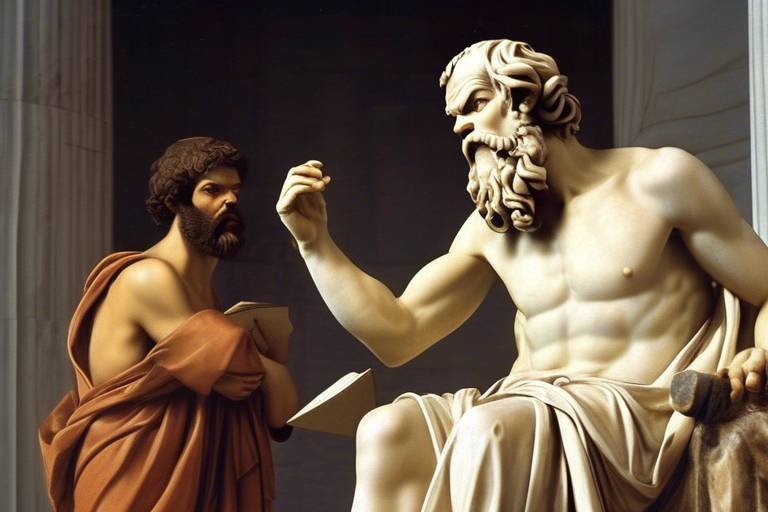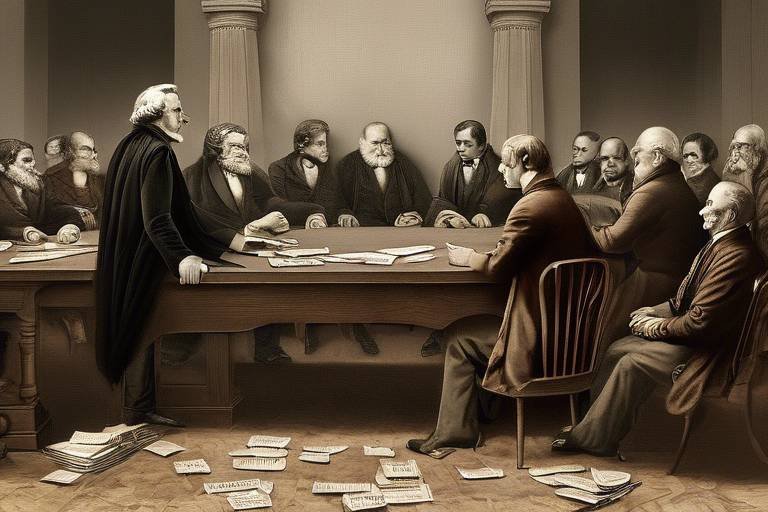Philosophy of Mathematics – An Analysis
The philosophy of mathematics is a fascinating field that dives deep into the very essence of what mathematics is, how it functions, and its implications on our understanding of reality. At first glance, one might think of mathematics as simply a collection of numbers and equations, but it’s much more than that. It’s a profound exploration of concepts that have shaped human thought for centuries. Imagine mathematics as a vast ocean; the surface is filled with numbers and formulas, yet beneath it lies a rich tapestry of philosophical questions about existence, truth, and meaning.
At its core, the philosophy of mathematics grapples with questions like: Do mathematical objects exist independently of human thought? Are mathematical truths discovered or invented? These questions not only challenge mathematicians but also philosophers, scientists, and anyone who has ever pondered the nature of reality. As we journey through this article, we will explore key theories and debates that have emerged over the years, shedding light on the intricate relationship between mathematics and the world around us.
Throughout history, various thinkers have contributed to this rich tapestry. From ancient philosophers like Plato, who suggested that mathematical forms exist in a realm of their own, to contemporary debates surrounding the nature of mathematical truth, the evolution of mathematical thought provides a backdrop for understanding current philosophical discussions. In this analysis, we will examine the historical perspectives that have shaped our understanding of mathematics and its philosophical implications.
As we delve deeper, we will encounter various schools of thought, such as Platonism, which posits that mathematical entities exist independently of human thought. This view raises intriguing questions about the implications of such existence on mathematical practice and theory. We will also explore mathematical realism, which argues for the objective existence of mathematical truths. Supporters of realism emphasize the success of mathematics in explaining the physical world, while critics raise alternative views that challenge the existence of abstract mathematical objects.
Furthermore, we will touch upon constructivism and intuitionism, which assert that mathematical knowledge is constructed rather than discovered. This perspective reshapes our understanding of mathematical truth and existence, inviting us to consider how we come to know mathematical concepts. Finally, we will discuss formalism, which emphasizes the role of symbols and formal systems, influencing our understanding of mathematical meaning and practice.
In essence, the philosophy of mathematics is not just an academic pursuit; it’s a reflection of our quest for knowledge and understanding. As we navigate through these philosophical waters, we invite you to ponder the implications of mathematics in your own life. How does it shape your understanding of the world? What role does it play in your daily decisions? Join us as we explore these profound questions and the theories that seek to answer them.
- What is the philosophy of mathematics? - It is a field that examines the nature, existence, and implications of mathematical concepts and truths.
- Who are some key philosophers in this field? - Notable figures include Plato, Frege, Russell, and contemporary philosophers like Penelope Maddy and Stephen Yablo.
- What is Platonism in mathematics? - Platonism is the belief that mathematical entities exist independently of human thought, similar to physical objects.
- What is the difference between constructivism and realism? - Constructivism posits that mathematical knowledge is constructed by humans, while realism argues for the objective existence of mathematical truths.

Historical Perspectives
Understanding the evolution of mathematical thought provides a fascinating lens through which we can examine contemporary philosophical debates. The philosophy of mathematics is not just a modern concept; it has deep historical roots that trace back to ancient civilizations. For instance, the ancient Greeks were pivotal in shaping mathematical philosophy, with figures like Euclid and Aristotle laying foundational ideas about geometry and logic. Their works didn’t just contribute to mathematics; they also sparked philosophical inquiries into the nature of mathematical truths.
As we journey through history, we encounter the Middle Ages, a period where mathematics was often intertwined with religion. Thinkers like Thomas Aquinas began to explore the relationship between divine order and mathematical principles, suggesting that mathematics was a reflection of a greater cosmic order. This perspective introduced a metaphysical dimension to mathematics, which would later influence the Renaissance thinkers who revived classical ideas.
The Renaissance marked a significant turning point. Mathematicians like Fibonacci and later Descartes began to view mathematics through a more empirical lens, emphasizing observation and calculation. This shift laid the groundwork for the Scientific Revolution, where mathematics became the language of science. Figures like Isaac Newton and Gottfried Wilhelm Leibniz not only advanced mathematical concepts but also raised philosophical questions about the nature of mathematical existence and its applicability to the physical world.
Moving into the 19th century, the philosophy of mathematics took on new dimensions with the emergence of formalism and logicism. Thinkers such as Georg Cantor and Bertrand Russell challenged existing notions by introducing set theory and exploring the foundations of mathematics. Their work led to significant debates about the nature of infinity and the existence of mathematical objects, prompting philosophers to ask whether these entities are discovered or invented.
In the 20th century, the landscape of mathematical philosophy continued to evolve. The rise of formalism and constructivism introduced new perspectives on mathematical truth. Formalists like David Hilbert argued that mathematics is a game played with symbols, while constructivists focused on the processes of mathematical creation. This divergence in thought reflects a broader philosophical tension: is mathematics an inherent part of the universe, or is it a construct of human thought?
To summarize the historical perspectives on the philosophy of mathematics, we can highlight key periods and figures in the following table:
| Period | Key Figures | Contributions |
|---|---|---|
| Ancient Greece | Euclid, Aristotle | Foundation of geometry and logic |
| Middle Ages | Thomas Aquinas | Linking mathematics with divine order |
| Renaissance | Fibonacci, Descartes | Empirical approach to mathematics |
| 19th Century | Georg Cantor, Bertrand Russell | Set theory and the nature of infinity |
| 20th Century | David Hilbert, L.E.J. Brouwer | Formalism and constructivism |
In conclusion, the historical perspectives on the philosophy of mathematics reveal a rich tapestry of thought that continues to influence modern debates. From ancient philosophers to contemporary theorists, the questions surrounding the nature, existence, and implications of mathematics remain as relevant today as they were centuries ago. As we delve deeper into these philosophical inquiries, we not only uncover the roots of mathematical thought but also challenge our understanding of reality itself.
- What is the philosophy of mathematics? - It is the study of the assumptions, foundations, and implications of mathematics.
- Who are some key figures in the philosophy of mathematics? - Important figures include Euclid, Aristotle, Cantor, and Hilbert.
- What are the main schools of thought in mathematical philosophy? - Major schools include Platonism, formalism, and constructivism.
- How does the philosophy of mathematics relate to reality? - It raises questions about whether mathematical entities exist independently of human thought or are merely constructs.
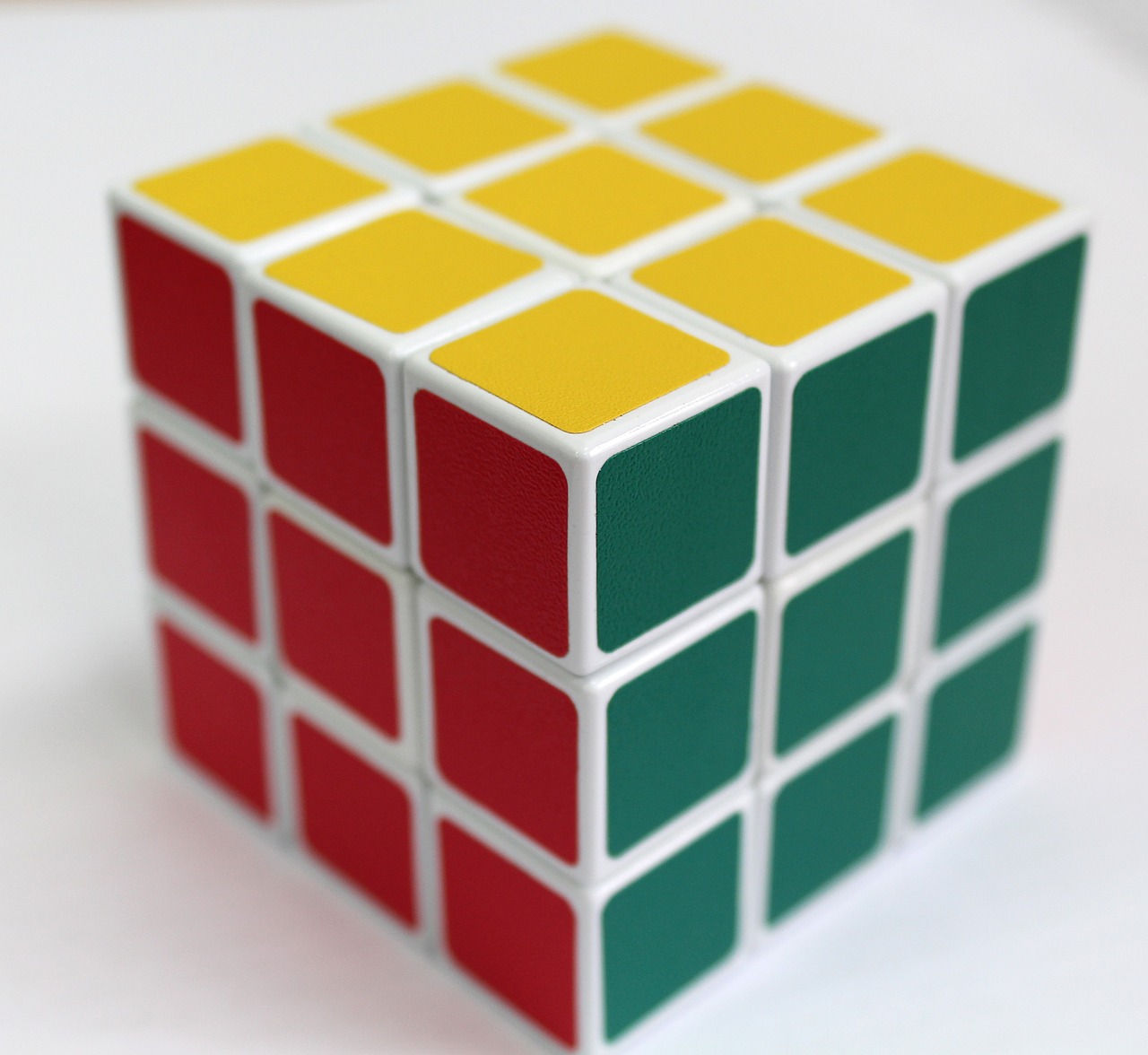
Platonism in Mathematics
When we dive into the realm of , we encounter a fascinating perspective that challenges our understanding of reality itself. At its core, Platonism suggests that mathematical entities—like numbers, shapes, and functions—exist independently of human thought. Imagine a world where these abstract concepts float around, waiting to be discovered, much like hidden treasures beneath the ocean's surface. This view implies that mathematics is not merely a human invention but a universal language that describes the fabric of the universe.
One of the most compelling aspects of Platonism is its assertion that mathematical truths are eternal and unchanging. For instance, consider the statement "2 + 2 4." This isn’t just a simple arithmetic fact; it represents a truth that exists regardless of whether humans are around to acknowledge it. Platonists argue that such truths are discovered rather than invented, akin to explorers uncovering ancient ruins that have always been there, waiting for someone to recognize their significance.
However, this perspective raises some intriguing questions. If mathematical entities exist in a realm beyond our physical world, how do we access them? How do we know they are real? These inquiries lead to rich discussions about the implications of mathematical practice and theory. For instance, mathematicians often find themselves in debates over the nature of proofs and the validity of mathematical theorems. Are they uncovering existing truths, or are they creating new ones? This dichotomy is at the heart of the philosophical discourse surrounding Platonism.
Moreover, Platonism has influenced various fields beyond pure mathematics. In physics, for example, mathematical models are frequently used to describe natural phenomena. The success of these models often leads to the belief that the mathematical structures themselves have some form of existence in the physical realm. This connection between mathematics and reality raises further questions about the significance of mathematical discoveries. Are they simply tools for understanding the world, or do they hold a deeper ontological status?
In summary, Platonism in mathematics invites us to ponder the existence of mathematical entities and their relationship with reality. It challenges us to consider the nature of truth and knowledge, urging us to explore the profound implications of mathematical thought. As we continue to navigate this philosophical landscape, we find ourselves not only questioning the essence of mathematics but also our place within the universe it seeks to describe.
- What is Platonism in mathematics? Platonism is the philosophical view that mathematical entities exist independently of human thought and are discovered rather than invented.
- How does Platonism differ from other philosophical views? Unlike nominalism, which denies the independent existence of mathematical objects, Platonism asserts that these entities have a real existence in a non-physical realm.
- What are some implications of Platonism for mathematics? Platonism suggests that mathematical truths are eternal and unchanging, influencing how mathematicians approach proofs and the nature of mathematical discovery.
- How does Platonism relate to the physical world? Platonism raises questions about the connection between mathematical structures and physical reality, particularly in fields like physics where mathematics is used to model natural phenomena.
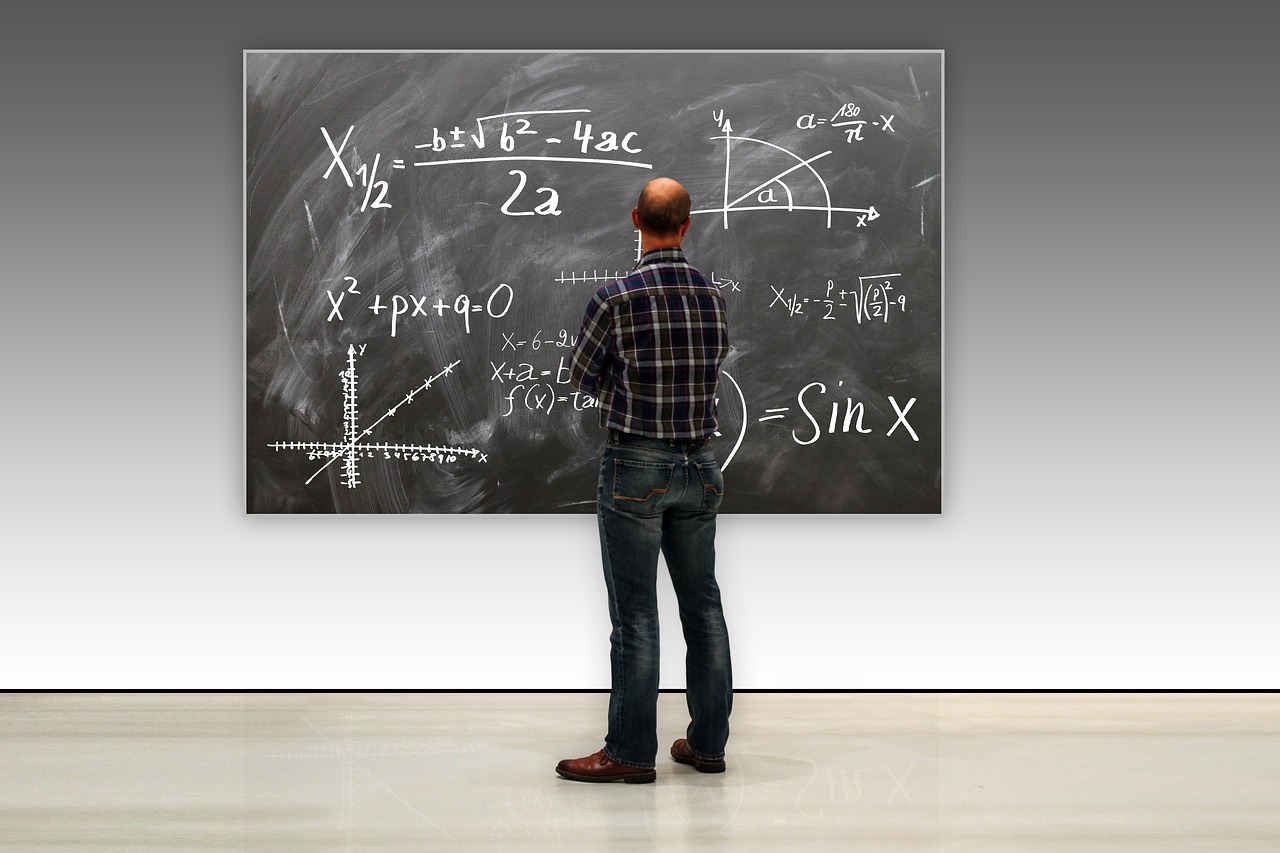
Mathematical Realism
Mathematical realism, a compelling viewpoint within the philosophy of mathematics, champions the idea that mathematical entities—like numbers and geometric shapes—exist independently of human thought. This perspective raises intriguing questions: Do these entities have an existence beyond our comprehension? Are they discovered rather than invented? Advocates of mathematical realism argue that the success of mathematics in describing the physical world lends credence to the notion that mathematical truths exist objectively. For instance, consider how mathematical equations can precisely describe the laws of physics. This consistency suggests that mathematics is not merely a human construct but rather a reflection of an underlying reality.
To delve deeper, let’s explore some of the key arguments that support mathematical realism:
- Success of Mathematics: The ability of mathematics to predict and explain natural phenomena is often cited as a strong argument for realism. Think about how engineers use calculus to design bridges or how physicists rely on differential equations to understand motion. The effectiveness of these mathematical tools suggests they correspond to real-world structures.
- Universality of Mathematical Truths: Mathematical truths, such as the Pythagorean theorem, hold universally across different cultures and epochs. This universality implies that these truths exist independently of our beliefs or knowledge.
- Independence from Human Thought: Realists argue that mathematical objects do not rely on human minds for their existence. For example, the number 2 would still exist even if no one were around to think about it.
However, the debate is far from settled. Critics of mathematical realism present several challenges, questioning the existence of abstract mathematical objects. They argue that if mathematical entities exist independently, how can we account for the varying interpretations and applications of mathematics across different cultures and scientific disciplines? This brings us to a crucial aspect of the discussion: the implications of realism for mathematical discourse. If mathematical truths are objective, how do we reconcile differing mathematical practices and beliefs?
In summary, mathematical realism presents a fascinating lens through which we can view the nature of mathematics. Its emphasis on the objective existence of mathematical truths not only shapes our understanding of mathematics itself but also influences how we apply mathematical concepts in various fields. As we continue to explore this philosophical territory, it becomes increasingly clear that the relationship between mathematics and reality is a complex and nuanced one, filled with both challenges and opportunities for deeper understanding.
- What is mathematical realism? Mathematical realism is the philosophical position that mathematical entities exist independently of human thought and that mathematical truths are objective.
- How does mathematical realism relate to the success of mathematics? Proponents argue that the success of mathematics in explaining and predicting real-world phenomena supports the idea that mathematical truths exist independently.
- What are some criticisms of mathematical realism? Critics question the existence of abstract mathematical objects, arguing that if they exist independently, it becomes challenging to reconcile differing mathematical practices across cultures.
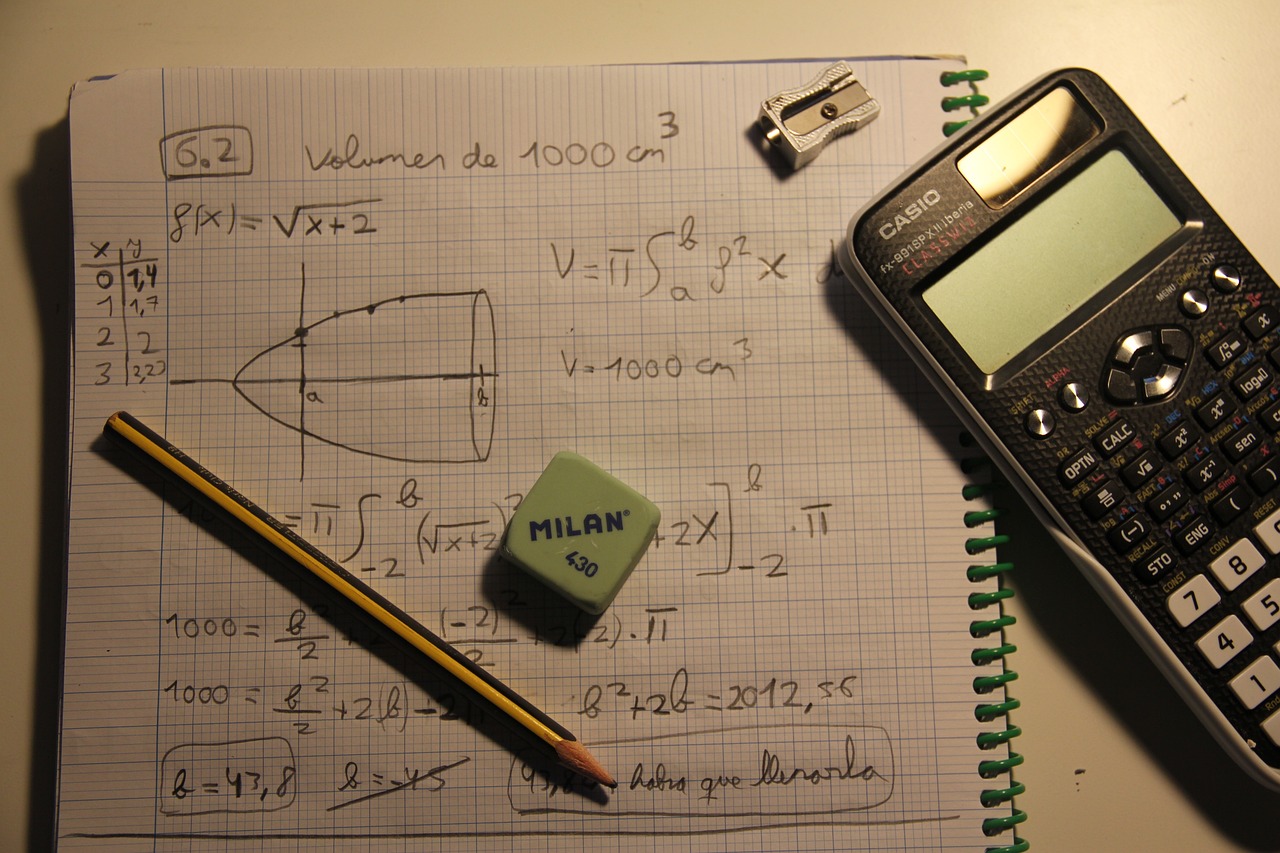
Arguments for Realism
The debate surrounding mathematical realism is as vibrant as a bustling marketplace, filled with contrasting ideas and fervent discussions. Supporters of realism assert that mathematical entities possess an objective existence, independent of human thought. This perspective is not just a theoretical stance; it has profound implications for how we understand mathematics and its relationship to the world around us. When we delve into the arguments supporting realism, we find a compelling case that intertwines the success of mathematics with the reality of its truths.
One of the most powerful arguments for mathematical realism is the success of mathematics in the natural sciences. Think about it: mathematics acts as a universal language, enabling scientists to describe phenomena ranging from the intricate dance of celestial bodies to the microscopic interactions of particles. For instance, consider the mathematical equations that describe gravitational forces. They not only predict the movement of planets but also have practical applications, such as sending spacecraft to distant worlds. This success suggests that mathematical truths are not merely human inventions but rather reflections of an underlying reality.
Furthermore, proponents argue that the consistency and universality of mathematical truths bolster the realist position. Take the Pythagorean theorem, for instance. It holds true regardless of where or when it is applied. Whether in ancient Greece or modern-day architecture, the relationship between the sides of a right triangle remains constant. This universality hints at a deeper, more profound existence of mathematical truths that transcends human thought. If mathematics were merely a construct of the mind, why would it consistently apply across diverse contexts and cultures?
Another argument for realism is the predictive power of mathematics. The ability to use mathematical models to predict future events is striking. For example, mathematicians and statisticians use models to forecast weather patterns, stock market trends, and even the spread of diseases. These predictions often come to fruition, lending credence to the idea that mathematical entities and truths exist independently of our perceptions. The more successful these predictions are, the stronger the case for realism becomes.
Moreover, the intuitive grasp of mathematical concepts plays a crucial role in the argument for realism. Many mathematicians and philosophers argue that the way we naturally understand and interact with mathematical ideas suggests their objective existence. When we visualize numbers, geometric shapes, or even complex equations, we are not merely engaging in mental gymnastics; we are tapping into something that feels fundamentally real. This intuitive connection hints that mathematics is not just a human creation but rather a discovery of truths that are waiting to be uncovered.
In conclusion, the arguments for mathematical realism are compelling and multifaceted. From the undeniable success of mathematics in explaining the physical world to its consistent application across time and culture, realism presents a robust framework for understanding the nature of mathematical truths. As we continue to explore the philosophy of mathematics, these arguments will undoubtedly shape the discourse, inviting both support and skepticism in equal measure. The quest for understanding the essence of mathematics is far from over, and the debate surrounding realism will persist as a central theme in this fascinating journey.
- What is mathematical realism? Mathematical realism is the view that mathematical entities exist independently of human thought and that mathematical truths are objective and universal.
- How does mathematical realism relate to the natural sciences? Proponents argue that the success of mathematics in explaining and predicting phenomena in the natural sciences supports the idea that mathematical truths exist independently of us.
- What are some challenges to mathematical realism? Critics question the existence of abstract mathematical objects and offer alternative views, suggesting that mathematics may be a construct of human thought rather than a discovery of objective truths.
- Can mathematical realism be applied to everyday life? Yes, mathematical realism can be observed in many practical applications, such as engineering, architecture, and economics, where mathematical principles consistently yield accurate results.

Challenges to Realism
While mathematical realism presents a compelling case for the objective existence of mathematical truths, it is not without its challenges. Critics often argue that the notion of abstract mathematical objects existing independently of human thought raises significant philosophical questions. For instance, how can we account for the existence of these entities if they are not observable? This dilemma leads to a broader debate regarding the nature of existence itself, especially in the context of mathematics.
One of the primary challenges to realism comes from the argument from epistemology. Critics question how we can have knowledge of mathematical entities that supposedly exist outside of our minds. If these objects are not part of the physical world, how can we claim to know anything about them? This skepticism is often illustrated through the lens of human cognition, suggesting that our understanding of mathematics is inherently tied to our mental processes and not to an independent realm of mathematical truths.
Moreover, the argument from the applicability of mathematics poses a significant challenge. Critics argue that the success of mathematics in describing the physical world does not necessarily imply that mathematical entities exist independently. Instead, it may simply reflect the utility of mathematical frameworks in modeling real-world phenomena. This perspective can lead to the conclusion that mathematics is more of a linguistic tool than a reflection of an objective reality. In this view, mathematical truths are contingent upon their application rather than their existence.
Another challenge arises from the problem of indiscernibles. If mathematical objects are abstract and exist independently, then how do we account for the fact that different mathematical theories can yield the same results? For instance, the same mathematical truths can be derived from different axiomatic systems. This raises questions about the uniqueness of mathematical objects and whether they can truly be said to exist in an objective sense. The existence of multiple, equally valid mathematical frameworks suggests that realism may not adequately capture the complexity of mathematical practice.
Additionally, a notable critique comes from nominalism, which denies the existence of abstract objects altogether. Nominalists argue that mathematical statements can be understood without reference to abstract entities. They propose that mathematics is a human invention, a language developed to describe relationships and patterns in the world around us. This perspective challenges the realist view by emphasizing the role of human creativity in the development of mathematical concepts, suggesting that mathematics is more about our interpretations than about discovering pre-existing truths.
In summary, while mathematical realism offers a robust framework for understanding the existence of mathematical truths, it faces significant challenges from various philosophical perspectives. The debates surrounding these challenges not only enrich our understanding of mathematics but also highlight the intricate relationship between mathematics and reality, prompting us to reconsider our assumptions about what it means for something to exist. As we navigate through these philosophical waters, it becomes clear that the questions surrounding mathematical realism are as complex as the mathematics themselves.
- What is mathematical realism?
Mathematical realism is the philosophical view that mathematical entities exist independently of human thought and that mathematical truths are objective and discoverable.
- What are the main challenges to mathematical realism?
Challenges include the argument from epistemology, the applicability of mathematics, the problem of indiscernibles, and nominalism, which questions the existence of abstract mathematical objects.
- How does nominalism differ from realism?
Nominalism denies the existence of abstract mathematical entities, claiming that mathematics is a human invention rather than a discovery of pre-existing truths.
- Why is the debate over mathematical realism important?
This debate impacts our understanding of mathematics, its applications, and its relationship to reality, influencing how we teach, learn, and apply mathematical concepts.

Constructivism and Intuitionism
When we dive into the realm of constructivism and intuitionism, we find ourselves at the crossroads of mathematical philosophy where the nature of mathematical truth is questioned. Unlike traditional views that treat mathematics as a discovery of existing truths, constructivism argues that mathematical knowledge is something we actively create. Imagine building a house; you don’t just find bricks lying around; you gather materials, design your blueprint, and construct it piece by piece. This analogy captures the essence of how constructivists view mathematics: it’s not out there waiting to be uncovered but is rather a product of human ingenuity and creativity.
Constructivism emphasizes the necessity of constructive proofs, which means that to prove a mathematical statement, one must provide a method to construct an example of it. This contrasts sharply with classical mathematics, where a proof can be established through contradiction or by showing that an example cannot exist. For instance, in the case of the existence of a mathematical object, a constructivist would insist on demonstrating how to create that object rather than merely asserting its existence. This leads to a fascinating discussion about the implications of such a viewpoint, particularly in fields like computer science, where algorithms play a crucial role.
On the other hand, intuitionism, founded by the mathematician L.E.J. Brouwer, takes a similar yet distinct path. Intuitionism posits that mathematical truths are not universal but are instead tied to the mental constructions of individuals. Brouwer famously stated that mathematics is a creation of the human mind, and thus, mathematical objects only exist when they are explicitly constructed. This perspective raises intriguing questions about the nature of mathematical existence. Can something be said to exist if it cannot be conceived in the mind? Intuitionists reject the law of excluded middle, a fundamental principle in classical logic, which states that every statement is either true or false. They argue that for many mathematical statements, particularly those not yet proven, the truth is indeterminate until a constructive proof is provided.
Both constructivism and intuitionism challenge the traditional notions held by many mathematicians. Their emphasis on the construction of mathematical objects means that the focus shifts from abstract entities existing in a Platonic realm to the cognitive processes involved in mathematical thinking. This shift has profound implications for how we understand mathematical truth, existence, and the very nature of mathematical practice. As we explore further, we can see how these philosophies not only influence theoretical mathematics but also have practical ramifications in areas like computer science and logic.
To visualize the differences between these philosophies, consider the following table:
| Aspect | Constructivism | Intuitionism |
|---|---|---|
| Nature of Mathematical Truth | Constructed through human activity | Dependent on mental constructions |
| Proof Requirements | Constructive proofs are essential | Proof must reflect mental construction |
| View on Existence | Objects exist if they can be constructed | Existence is tied to human thought |
| Law of Excluded Middle | Accepted in classical terms | Rejected for unproven statements |
As we navigate through the intricate landscape of mathematics, understanding constructivism and intuitionism opens up new avenues for exploration. It encourages us to rethink our approach to mathematical truths and consider the implications of our cognitive processes. So, the next time you ponder a mathematical problem, ask yourself: Are you discovering a truth, or are you creating it?
- What is the main difference between constructivism and intuitionism?
Constructivism focuses on the construction of mathematical knowledge through explicit methods, while intuitionism emphasizes the mental construction of mathematical truths, rejecting classical logic's law of excluded middle.
- How do these philosophies impact modern mathematics?
They challenge traditional views and influence fields like computer science, where constructive methods are essential for algorithm development and verification.
- Can you provide an example of a constructive proof?
Yes! A classic example is proving that there are infinitely many even numbers by demonstrating how to construct an even number for any natural number n by simply taking 2n.

Formalism and Its Implications
Formalism in mathematics is a fascinating perspective that emphasizes the importance of symbols and formal systems over the intrinsic meaning of mathematical concepts. Imagine a game where the rules are everything; the players may come and go, but the game remains unchanged. In this sense, formalism treats mathematics as a game played with symbols, where the focus lies on manipulation and transformation rather than on understanding the underlying truths of the universe. This approach raises questions about what it means to "know" mathematics and how we derive meaning from mathematical expressions.
One of the most significant implications of formalism is its impact on how we view mathematical truth. If mathematics is merely a manipulation of symbols, then does it hold any objective truth? This leads us to ponder whether mathematical statements are true in the same way that scientific statements are, or if they exist in a realm solely defined by human-created systems. This dichotomy between syntax (the arrangement of symbols) and semantics (the meaning behind those symbols) becomes crucial in understanding formalism. For example, consider the following table that contrasts these two concepts:
| Aspect | Syntax | Semantics |
|---|---|---|
| Definition | Rules governing the arrangement of symbols | Meaning derived from those symbols |
| Focus | Structure and form | Interpretation and implications |
| Example | 2 + 2 4 (as a string of symbols) | The concept of "four" as a quantity |
This table illustrates that while syntax can be understood independently of meaning, semantics relies heavily on context and interpretation. This leads us to consider how formalism influences various fields beyond pure mathematics. For instance, in computer science, formal systems are foundational in programming languages and algorithms. Here, the precise manipulation of symbols is essential for creating functional software. Similarly, in logic, formalism provides the structure needed to analyze arguments and validate reasoning.
Furthermore, formalism has implications for mathematical education. By focusing on the rules and procedures of mathematics, educators can provide students with a solid foundation in problem-solving skills. However, this approach can also lead to a disconnect between students and the deeper meanings behind mathematical concepts. It's crucial to strike a balance; while students must master the mechanics of mathematics, they should also be encouraged to explore the 'why' behind the 'how'.
In conclusion, formalism offers a unique lens through which to view mathematics, emphasizing the power of symbols and formal systems. While it presents challenges regarding the nature of mathematical truth and understanding, it also opens doors to practical applications in various fields. As we continue to explore the implications of formalism, we must remain mindful of the interplay between syntax and semantics, ensuring that our mathematical pursuits are both rigorous and meaningful.
- What is formalism in mathematics? Formalism is a philosophical approach that focuses on the manipulation of symbols and formal systems in mathematics, rather than on the meanings of those symbols.
- How does formalism differ from other mathematical philosophies? Unlike Platonism, which posits the independent existence of mathematical entities, formalism views mathematics as a game governed by rules and symbols.
- What are the practical applications of formalism? Formalism is foundational in fields like computer science and logic, where precise manipulation of symbols is essential for programming and reasoning.
- Can formalism impact mathematical education? Yes, while it teaches essential problem-solving skills, it’s important to also emphasize the meanings behind mathematical concepts to foster deeper understanding.
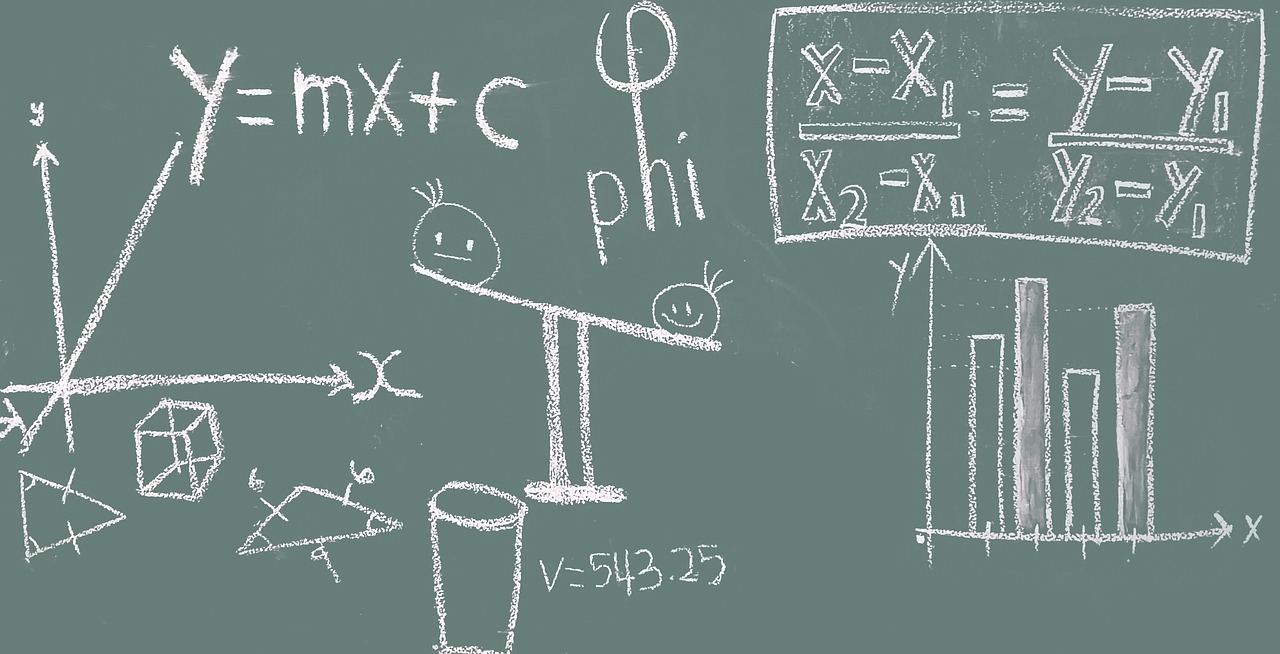
Syntax vs. Semantics
In the realm of formalism, the distinction between syntax and semantics plays a pivotal role in how we interpret mathematical statements and structures. To put it simply, syntax refers to the rules and symbols used to construct mathematical expressions, while semantics deals with the meanings and interpretations of those expressions. Imagine syntax as the grammar of a language; it dictates how words are arranged to form coherent sentences. Semantics, on the other hand, is akin to the meaning behind those sentences. Without syntax, we could not even begin to communicate mathematical ideas, yet without semantics, those ideas would be devoid of meaning.
When mathematicians engage with formal systems, they often focus on the syntactic rules that govern the manipulation of symbols. This approach allows for rigorous proofs and logical deductions, providing a framework within which mathematical statements can be verified. However, the reliance on syntax alone raises intriguing questions. For instance, what happens when a mathematical statement is syntactically correct but semantically meaningless? This dilemma highlights the importance of semantics in ensuring that our mathematical discourse is not just a series of symbols thrown together without any coherent meaning.
To illustrate this further, consider the following table that contrasts syntax and semantics in mathematics:
| Aspect | Syntax | Semantics |
|---|---|---|
| Definition | Rules governing symbol arrangement | Meaning and interpretation of symbols |
| Focus | Structure and form | Content and significance |
| Example | 2 + 2 4 is syntactically correct | The statement reflects a true mathematical relationship |
This table encapsulates the essence of the syntax-semantics distinction, emphasizing how both elements are crucial for a comprehensive understanding of mathematics. As we delve deeper into formalism, we recognize that while syntax provides the scaffolding for mathematical expression, semantics breathes life into those expressions, allowing us to grasp their implications in the real world.
Moreover, the interplay between syntax and semantics invites us to ponder philosophical questions about the nature of mathematical truth. Can a statement be considered true if it adheres to syntactic rules but lacks semantic depth? This is where the debates within the philosophy of mathematics become particularly vibrant, as different schools of thought grapple with the implications of this dichotomy.
In conclusion, the relationship between syntax and semantics is not merely academic; it has profound implications for how we understand and apply mathematics in various fields. Whether in pure mathematics, computer science, or logic, recognizing the balance between these two aspects can enhance our appreciation for the discipline and its philosophical foundations. As we continue to explore the philosophy of mathematics, it becomes increasingly clear that both syntax and semantics are indispensable for navigating the intricate landscape of mathematical thought.
- What is the difference between syntax and semantics in mathematics?
Syntax refers to the rules and structure of mathematical expressions, while semantics pertains to their meanings and interpretations. - Why is the distinction important?
Understanding this distinction helps mathematicians ensure that their expressions are not only correct in form but also meaningful in content. - How does this relate to formalism?
Formalism emphasizes the role of syntax in mathematics, but it must be balanced with an understanding of semantics to convey true mathematical ideas.
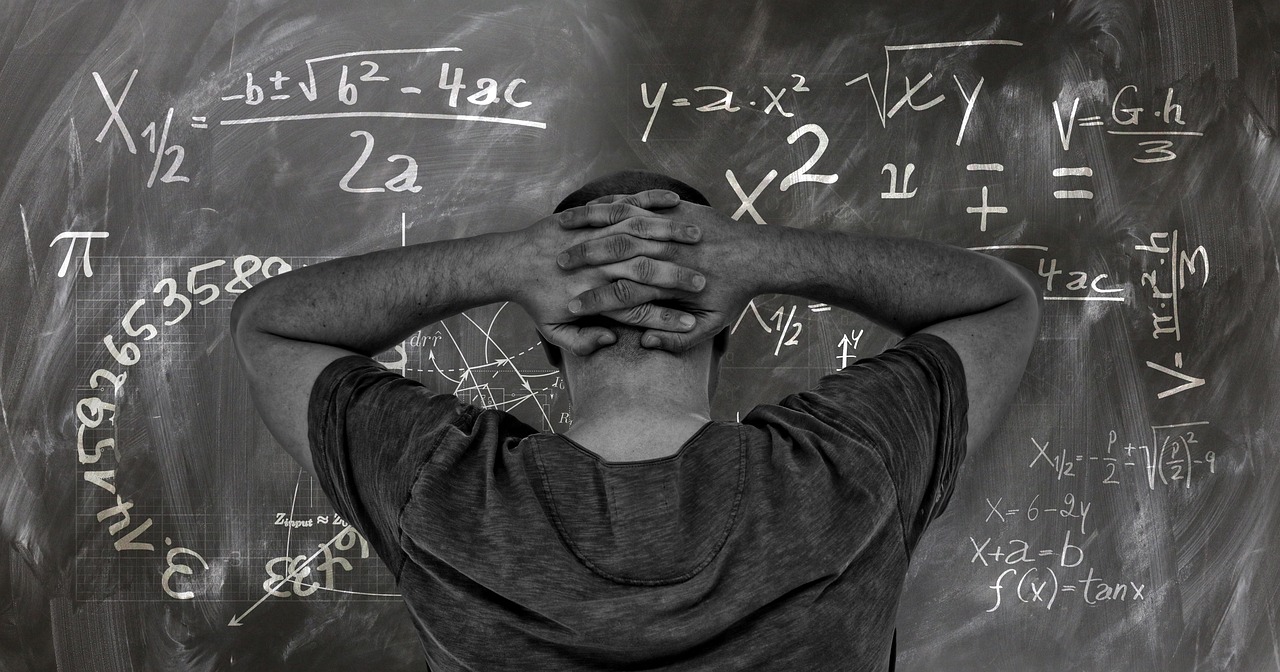
Applications of Formalism
When we dive into the realm of formalism, it becomes clear that this philosophical approach has far-reaching implications across various fields. At its core, formalism emphasizes the importance of symbols and formal systems in mathematics, stripping away the layers of meaning that often accompany mathematical concepts. This perspective not only shapes how mathematicians view their work but also influences practical applications in fields like computer science, logic, and even philosophy itself.
One of the most significant applications of formalism is found in computer science. Here, formal languages and systems are essential for programming and algorithm development. By utilizing formalism, computer scientists can create precise specifications that are devoid of ambiguity, ensuring that programs function as intended. For instance, programming languages themselves are built on formal rules, allowing developers to communicate complex ideas succinctly and effectively. This leads to fewer errors and more robust software.
Moreover, formalism plays a crucial role in logic. In this domain, formal systems are used to derive conclusions from premises through rigorous proof techniques. The use of formal logic helps in establishing the validity of arguments, ensuring that conclusions follow logically from given premises. This is not just a theoretical exercise; it has practical implications in areas such as artificial intelligence and automated theorem proving, where machines need to understand and manipulate logical statements.
To illustrate the breadth of formalism's impact, consider the following table that outlines key applications across different fields:
| Field | Application | Impact |
|---|---|---|
| Computer Science | Programming Languages | Enhances precision and reduces errors |
| Logic | Automated Theorem Proving | Facilitates machine understanding of logical arguments |
| Philosophy | Analysis of Mathematical Truth | Encourages discussions on the nature of mathematical existence |
In addition to these applications, formalism has also found its way into the world of mathematical education. Educators use formal systems to teach students the fundamental principles of mathematics, allowing them to grasp complex concepts through structured approaches. This method fosters a deeper understanding of mathematics as a language, one that is governed by rules and symbols rather than mere intuition.
Ultimately, the implications of formalism extend beyond mathematics itself. By highlighting the significance of symbols and formal structures, formalism encourages interdisciplinary collaboration. For example, mathematicians and computer scientists often work together to develop algorithms that rely on formal mathematical principles, showcasing how formalism serves as a bridge between theory and practice.
As we reflect on the applications of formalism, it's evident that this philosophical approach is not just an abstract notion but a vital component of modern mathematical practice. Whether in computer science, logic, or education, formalism shapes how we understand and apply mathematical concepts in the real world.
- What is formalism in mathematics?
Formalism is a philosophy that emphasizes the role of symbols and formal systems in mathematics, focusing on the manipulation of symbols according to established rules without concern for their meanings. - How does formalism apply to computer science?
In computer science, formalism is used to create programming languages and algorithms that are precise and unambiguous, leading to more reliable software development. - Why is formalism important in logic?
Formalism is crucial in logic as it provides a framework for deriving conclusions from premises, ensuring that logical arguments are valid and sound.
Frequently Asked Questions
- What is the philosophy of mathematics?
The philosophy of mathematics is the study of the assumptions, foundations, and implications of mathematics. It looks into questions about the nature of mathematical objects, the existence of mathematical truths, and the relationship between mathematics and reality. In essence, it’s like exploring the deep waters of what makes math tick!
- What is Platonism in mathematics?
Platonism is a philosophical view that suggests mathematical entities exist independently of human thought. Think of it like a hidden treasure that exists whether or not we discover it. Platonists believe that numbers and shapes have a reality of their own, waiting to be uncovered by mathematicians.
- What are the main arguments for mathematical realism?
Supporters of mathematical realism argue that the success of mathematics in explaining the physical world indicates the objective existence of mathematical truths. They believe that just as the stars exist in the sky, so do mathematical concepts exist in a realm of their own. This perspective highlights the practical utility of math in sciences and engineering.
- What challenges does realism face?
Critics of realism challenge the notion that abstract mathematical objects exist independently. They argue that if we can’t see or touch these entities, how can we claim they exist? This debate is akin to arguing about the existence of unicorns – just because we can imagine them doesn’t mean they’re real!
- What is constructivism in mathematics?
Constructivism is the idea that mathematical knowledge is constructed rather than discovered. It emphasizes that we create mathematical truths through our own mental processes. Imagine building a sandcastle – each grain of sand represents a piece of knowledge that you assemble to create something meaningful.
- How does formalism impact mathematics?
Formalism focuses on the role of symbols and formal systems in mathematics. It suggests that the meaning of mathematical statements comes from their structure rather than their content. This perspective can be likened to a language where the arrangement of words is more important than the actual words themselves!
- What is the difference between syntax and semantics in formalism?
In formalism, syntax refers to the rules and structure of mathematical expressions, while semantics deals with the meanings behind those expressions. Understanding this distinction is crucial, as it affects how we interpret mathematical statements and engage in philosophical discussions about them.
- What are the applications of formalism?
Formalism has practical applications in various fields, including computer science, logic, and even artificial intelligence. It helps in creating algorithms and programming languages, making it a vital part of modern technology. Think of it as the backbone that supports the digital world!



